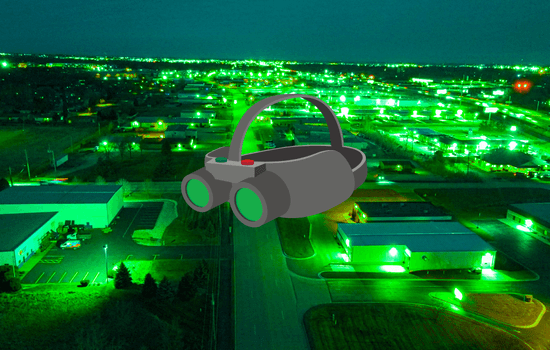Advertisements
What is Night Vision and How Does It Work?
Night vision is a technology designed to improve the ability to see in low or no light conditions.
Used in sectors such as security, exploration, and the military, this innovation allows capturing details invisible to the human eye in the dark.
Advertisements
Basic Principles of Night Vision
There are two main methods that make night vision possible:
Advertisements
- Light Intensification (Image Intensification): It captures small amounts of ambient light, such as starlight or moonlight, and amplifies it to create a visible image.
- Infrared Imaging (Thermal Imaging): It detects the heat emitted by objects and living beings, transforming these temperature differences into visible thermal images.
See also
- Applications to Create Your Family Tree
- Apps to Listen to Old Music and Relive Classics
- Discover Love Compatibility Based on the Zodiac
- Find Anyone Using Just One Photo
- Best Apps to Learn Automotive Mechanics
Key Components of a Night Vision Device
- Objective lens: Collects light or infrared waves.
- Image intensifier: Amplifies light signals.
- Screen: Presents the processed image to the user.
- Energy source: Powers the device, usually batteries.
Practical Applications of Night Vision
Security and Surveillance
Night vision systems are essential for monitoring sensitive areas at night. Security cameras equipped with this technology can identify movements and faces in low-light conditions.
Outdoor Activities
Explorers, campers, and hunters use night vision devices to navigate in the dark, observe wildlife, or increase their safety in natural environments.
Military and Police Use
From night missions to rescue operations, night vision is a crucial tool for armed forces and law enforcement agencies.
Automotive
Some modern vehicles include night vision systems that detect pedestrians or animals on the road, improving road safety.
Types of Night Vision Devices
Night Vision Goggles
Lightweight and portable, these glasses are popular for tactical and exploration activities.
Night Vision Cameras
Used in wildlife surveillance and documentation systems, they offer a wide variety of models adapted to different needs.
Monoculars and Binoculars
Compact devices that offer excellent image magnification, ideal for observing details at long distances.
Tips for Choosing a Night Vision Device
- Purpose: Determine whether you need the device for security, exploration, or professional use.
- Image Quality: Check the device's resolution and viewing range.
- Durability: Look for water- and shock-resistant models if you'll be using them in extreme conditions.
- Energy source: Consider battery life and whether it supports rechargeable options.
- Budget: Options range from budget-friendly models to professional-grade devices.
Myths and Truths about Night Vision
Myth 1: Only the military can use night vision.
Reality: Although it was originally developed for military use, it is now widely available to civilians.
Myth 2: Night vision devices are always expensive.
Reality: There are accessible options for beginners and enthusiasts.
Myth 3: They only work in total darkness.
Reality: Night vision works best with some ambient light, but thermal devices can operate even in total darkness.

Frequently Asked Questions (FAQ)
How far can you see with night vision?
It depends on the device, but advanced models can reach up to 300 meters or more.
Are night vision devices legal?
In most countries, yes. However, its use may be regulated in certain contexts.
Is it possible to use night vision during the day?
Some devices include filters to protect them from daylight, but not all are suitable for daytime use.
What is the difference between thermal vision and light magnification?
Thermal vision detects heat, while light magnification works with small amounts of visible light.
What are the recommended brands?
Some popular brands include FLIR, ATN, and Bushnell, which offer options for different needs.
References
- “Night Vision Technology Explained,” TechVision Journal.
- “Guide to Choosing Night Vision Devices,” Outdoor Gear Hub.
- Download related apps: Google Play | App Store.
